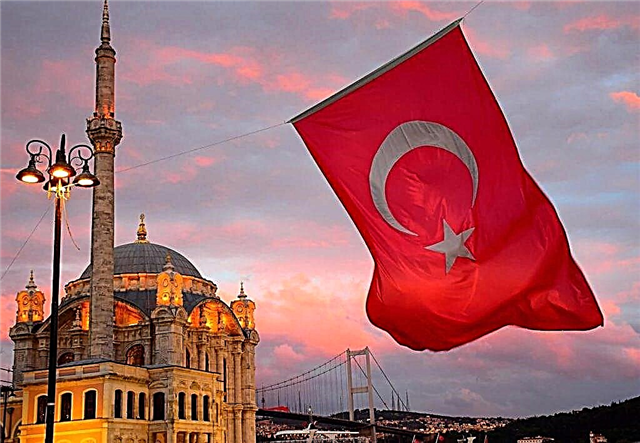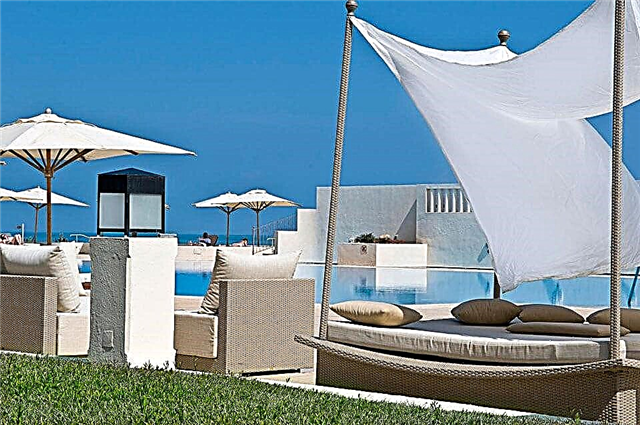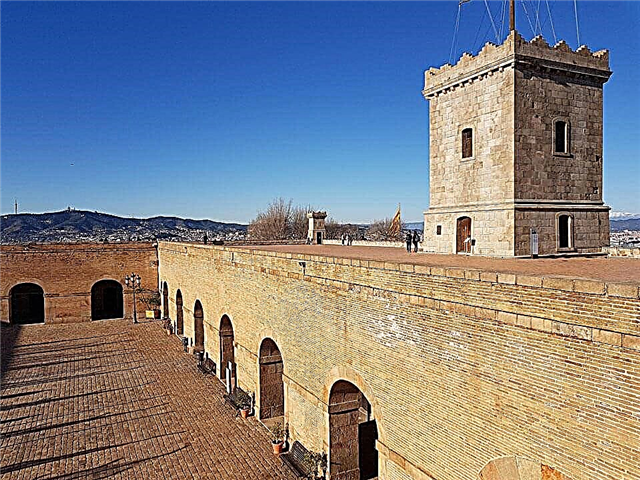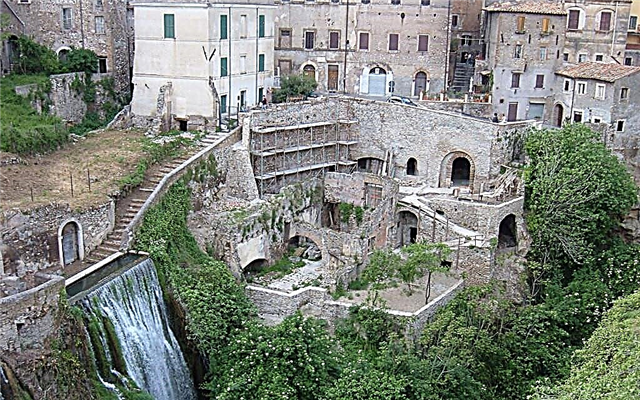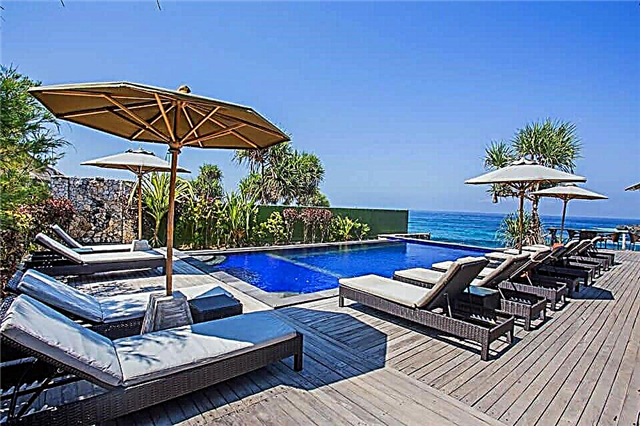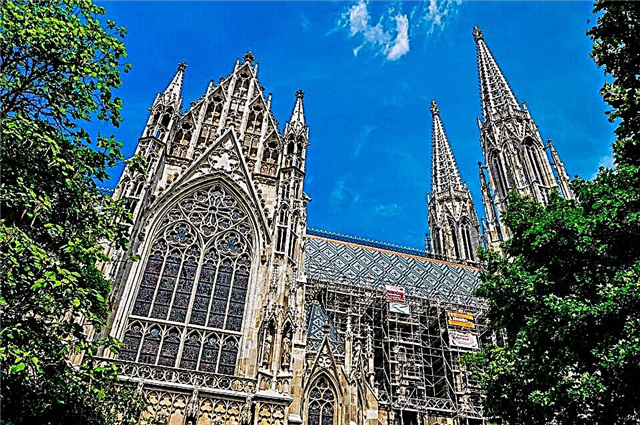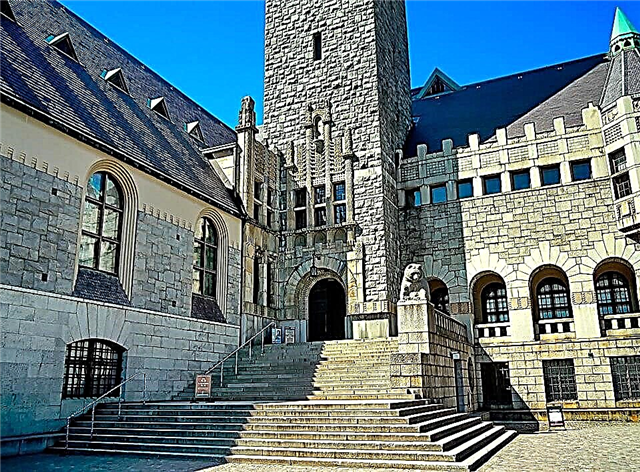"Daughter of the Baltic Sea" - as the Finns affectionately call their capital - differs from other European cities in a special Scandinavian flavor, peculiar architecture and a unique Nordic atmosphere of peace. The city also surprises with its location on the coast of the Gulf of Finland, when those who arrived by sea literally immediately from the ladder of the ship get to the city center. The museums of Helsinki are also interesting and amazing, captivating with their extraordinary expositions.
Design Museum

How hardworking and resourceful the Finns are, you can be convinced by reading Lassil's story "Behind the Matches", based on which Leonid Gaidai shot a brilliant comedy of the same name. The film vividly depicts the life and life of the Finns, the ability to decorate everyday interiors with intricate crafts. It is no coincidence that the oldest Design Museum is located in Helsinki, which originated back in 1873, when even such a term was not heard. The Society of Crafts, which existed at the time, laid the foundation for the museum collection, acquiring hundreds of original design objects at the Vienna World's Fair.
The objects have become a visual aid for students studying at the School of Applied Arts, and objects of contemplation for lovers of beauty and grace. For 100 years, the collection of design exhibits has been constantly replenished, occupying one of the old buildings. In 1978, the expositions of the museum were housed in another building, specially built in 1895 by the architect Nyström, which became a wonderful decoration of the city. It is impossible to pass by it indifferently - the originality of the neo-Gothic architecture and design elements immediately attracts attention.

The first floor of the museum is occupied by the central exposition "Finnish form", dedicated to the detailed history of the development of applied arts in Finland and other countries. Each exhibition hall has its own specific theme: interior items; furniture; dishes; various accessories; samples of unique handicrafts, etc. Here you can see rare photos, drawings, drawings of the most famous designers in the world.
The second floor is given over to temporary exhibitions, demonstrating the achievements of modern design, reflecting new development trends. Here you can see completely unusual objects, striking in their originality and attractiveness.
Address: Korkeavuorenkatu, 23. Open: every day in summer, 11.00 - 20.00
Autumn-winter: Tuesday, 11.00-20.00; Wednesday-Sunday - 13.00-18.00; weekend-th - Monday.
Ticket price (in euros): adult. - 10, penny. - 8, studio - 5, students - free
Museum of Contemporary Art "Kiasma"

Housed in an avant-garde building of cosmic enormous proportions, the Museum of Contemporary Art is a versatile center for 21st century culture and art. In grandiose halls with unusual interiors, 25 diverse galleries are located, displaying a variety of works of modern art.
There is something to be surprised about here - a great many exhibits illustrate the creative scope of the authors of works of art of various directions. Tours are accompanied by a personal audio guide - a special electronic multilingual (5 languages) device that introduces visitors to the exhibits. Everything here is provided for a comfortable stay: there is a cafe, restaurant, shop and even a library.
Address: Helsinki, Mannerheiminaukio, 2.
Open to the public: Wednesday-Fri. - 10.00-20.30, Tuesday, Sunday - 10.00-17.00; Sat - 10.00-18.00; weekend-th - Monday.
Entrance: children (under 18) - free; adult - 12 euros, penny - 8 euros.
Popular Science Center "Evrika"

An amazing place where even lazy and incurious children can feel like great experimenters and pioneers is the Eureka Science Center, which opened on 28.04.1989 in the suburb of Helsinki - the town of Vantaa. In this unusual museum, all exhibitions are interactive, allowing visitors to become participants in various chemical, physical, mathematical and other experiments. For example, you yourself can participate in the virtual process of making paper, conduct physical experiments.
Here you can get acquainted with 200 exhibits illustrating discoveries in the field of various sciences. Of particular interest is the Galileo summer park of scientific experiments with water, where they learn to build bridges, generate electricity, etc. No less exciting is a visit to the Vattenfall planetarium, equipped with a giant sphere of digital 3D screen displaying educational and scientific films. They are dubbed in 4 languages: Finnish, Swedish, English and Russian (using special headphones). A scientific and game show "The Way to the Stars" is organized here, introducing the secrets of the Universe.
National Museum of Finland

The magnificent building, reminiscent of the architecture of a medieval Scandinavian castle, is the best fit for the purpose of being the National Museum of Finland. In fact, this is a large-scale repository of cultural and historical exhibits illustrating the path of development of the state from ancient times to modern ones. Permanent and temporary exhibitions on local history, ethnography, culture, art fully reflect all aspects of life in Finland.
The Historical Section contains unique archaeological artifacts: ceramic and metal products, household items, various types of weapons, national jewelry. The exhibition "Treasures" presents numismatic collections, jewelry, superbly designed examples of edged weapons. The National Museum is the pride of Finland, a very popular place in the capital.
Address: Mannerheimintie, 34.
Open for visits: Tue-Sun, 11.00-18.00; Monday - out-th.
Entrance: adult - 10 euros; student, penny - 7 euros; children under 18 - free
Amos Anderson Art Museum

The largest collection of works of art and applied art in Finland is kept in the Anderson Museum, a renowned philanthropist and collector, owner of several publishing houses and an influential Swedish-language newspaper. After the death of the collector (1965), his house with all the collections became the Art Museum.
The upper floors of the building house permanent exhibitions, while the lower floors are occupied by temporary exhibitions. Many paintings, sculptures, photographs, objects of applied art of different styles are presented in the halls of the museum. Rare furniture, extraordinary ceramics, amazing tapestries that belonged to Anderson delight visitors. The museum hosts seminars, lectures, conferences on contemporary art.
Address: Yrjonkatu, 27.
Ateneum Art Museum

This museum is an integral part of the Finnish National Gallery, along with Kiasma and the Sinebrychoff Museum. The beginning of the grandiose collection of the Athenaeum Museum was laid in 1887 with 10 painting masterpieces donated by the Russian Emperor Nicholas II to the Association of Finnish Artists. Now the collection of the Ateneum includes several thousand works, including the famous canvases of Van Gogh, Chagall, Repin, Vasiliev, Modigliani, Cezanne, Gauguin and other geniuses of the brush (650 works in total).

The central place of the museum is an exposition of art paintings by Finnish masters of painting Simberg, Halonen, Edelfalt and others (a total of 4,000 paintings from different eras and trends). Samples of printed Scandinavian graphics, watercolor sketches, pencil sketches, and Japanese wood engraving are generously presented. The building of the museum itself is an architectural masterpiece of the authoritative designer Heyer.
The magnificent decoration is the merit of the famous Finnish sculptor Sjöstrand, who created an amazing sculpture of Aphrodite (the museum is named after her) and busts of world famous artists of the brush and chisel. The institution has created excellent conditions for a comfortable stay of visitors.
Address: Kayvonkatu, 2.
Open to the public: Tue, Fri.- 10.00-18.00; Wednesday-Thursday - 09.00-20.00; Sat, Sun - 10.00-17.00; weekend-th - Monday.
Ticket price (in euros): adult. - 15, studio and a penny. - 12, children under 18 - free
Seurasaari Open Air Museum

A favorite leisure spot for many Helsinki residents and tourists is Seurasaari Island, which is connected to the mainland by a pedestrian bridge. Here is a unique open-air museum, which visually presents the provincial past of Finland. Residential houses, outbuildings, windmills, saunas, stables, and an old church were brought here from all over the country. There are even yurts made of reindeer skins - the ancient dwellings of Finnish reindeer herders.
Among the wooden buildings there are unique specimens made without a single nail - a testament to the high skill of Finnish peasants. Many household items collected in the museum give a clear idea of the lifestyle of the country's rural residents, their crafts and types of work. It is a great pleasure to walk around the island among the trees, which are home to many squirrels.

In summer, you can relax on the beach (west coast of Seurasaari), swim and sunbathe under the northern sun. Finns spend holidays and festivities on the island with dances, songs, bonfires. Young people come here for a wedding in a wooden church. There is a cafe and a restaurant serving national dishes. There is a house-museum of the former president Kekkonen (he ruled the country for 25 years), where the flavor of the 60s of the last century has been preserved.
Open: every day in the summer, 11.00-17.00; May 15-May 31, 01.09-15. 09, Monday-Friday, 09.00-15.00; Sat-Sun, 11.00-17.00.
Entrance cost: in summer - adult. -9 €; May, Sep - 6 €; children (from 7 to 17) - 3 €; family - 20 €.
Museum of Hotel and Restaurant Business

In 2012, the only museum of hotel and restaurant business in Finland was opened in the renovated building of the former cable factory. Its expositions reveal in detail all the secrets of this important field of activity, acquaint with the history of the emergence and development of hotels and restaurants in the capital.
The necessary attributes in the form of kitchen utensils, cutlery, hotel furniture, various menus, recipes introduce visitors to all aspects of popular business from the 19th century to the present day.
Presented here are the kitchen, offices, a hall, a wine cellar, where you can see the everyday behind the scenes of the hotel business, the daily work of the service personnel. The unique sound design transports visitors to the restaurant of the last century, allows you to hear the sounds of a variety show. Despite its short existence, the museum has become extremely popular with Finns and tourists.
Natural History Museum

A fascinating acquaintance with the development of the world of fauna on the planet awaits everyone in an old mansion where the Museum of Natural History is located. The visit here is organized in an interesting and entertaining way. Right at the entrance, where everyone is greeted by the gigantic figure of an elephant, you can take a piece of paper with a crossword puzzle (in 5 languages) and a pencil. Walking around the museum expositions and looking at the exhibits, you can gradually answer all the questions of the crossword puzzle.
Each thematic section of the museum (there are 4 of them), temporary exhibitions are decorated in a very original and intriguing way. Of extraordinary interest is the hall, in which the African night is recreated with the twinkling of bright large stars, the cry of exotic birds, the heavy steps of a hippopotamus opening a huge mouth. Masterfully made dummies of the oldest Triceratops, giant squid, dinosaur give a clear idea of these creatures. Children are allowed to stroke some of the exhibits marked with a palm icon: a dinosaur egg, stuffed animals.

The museum has an elevator, a cafe, and a souvenir shop - employees are trying to ensure a comfortable journey around the world of natural history.
Address: Norra Jarnvaqsqatan, 13.
Working hours: Tue-Fri, 09.00-17.00; weekends - 11.00-16.00.
Ticket price (in euros): adult. - 10, children (from 7 to 17) - 5; children under 7 years old - free
On the first Thursday of each month - free admission: in summer - 15.00-17.00: in winter - 16.00-18.00.
Submarine Vesikko

On about. Suomenlinn in the Sveaborg fortress is a kind of museum-submarine "Vesikko". Designed by Dutch shipbuilders and launched from the stocks in Turku in 1933, the submarine took part in 2 wars (Soviet-Finnish and World War II). After the conclusion of the treaty banning submarines in Finland between the Soviet and Finnish states, Vesikko became an unnecessary object and was abandoned for 2 decades. To prevent it from turning into rusty iron, the former crew members repaired the boat and turned it into a museum (since 1973), which is part of the War Museum of Finland.
All submarine compartments have been restored, instruments and mechanisms have been cleaned of rust and painted, and a working environment has been recreated in the back rooms. Visitors can get a complete picture of the equipment and operation of the Vesikko submarine.
You can get here from Helsinki by ferry. The museum is open every day in the summer - 11.00-18.00. Entrance price: adult - 5 €, children - 3 €, family - 12 €.
Helsinki City Museum

A separate museum is dedicated to the history of the emergence and development of the capital of Finland. Its 4-storey building is located on Aleksanterinkatu Street. The exposition on each floor has its own focus: on the first, vintage photographs are shown, on the second, the interior of a typical Finnish apartment of the 20th century is recreated, on the third there is a corner with retro-style entertainment for children, on the fourth - short-term exhibitions.
Subordinate to the city museum are structural units dedicated to different pages from the life of Helsinki:
- Power Plant Museum
- Tram museum
- Burger House (1818)
- Sederholm House (1757)

The interior reproduces the everyday life of the Finnish bourgeoisie and merchants, and also clearly shows the original samples of technical devices and equipment. Visits to the Helsinki City Museum and its branches are free of charge. Access is carried out according to the schedule:
- Mon -fr. - from 9 a.m. to 7 p.m.
- Sat-Sun - from 11 a.m. to 5 p.m.
Didrichsen Art Museum

Kuusisaari Island, in the western part of Helsinki, is famous for its art museum, set up by the Didrichsen couple. Businessman Gunnar Didrichsen and his wife in the 50s of the 20th century began to collect works of art by Finnish masters. The core of the collection consists of works by A. Gallen-Kallela, P. Halonen, E. Yarnfelt. In the 60s. the exposition added masterpieces of the modernist style, created by P. Picasso, K. Pedersen, A. Tapis.
The private collection of Didrichsen was presented to the public in 1965. The museum gained fame as a repository of artifacts from the pre-Columbian civilizations of America. A separate room is dedicated to the art of Ancient China. In the park area of the estate there are 15 sculptures by contemporary authors.
The exposition is open to visitors every day (except Monday) from 11 am to 6 pm. The ticket price is 10-12 €. Children are free.
Helsinki Art Museum HAM

The uniqueness of the NAM Museum is in the vastness of its collection (over 9 thousand exhibits) and its mosaic distribution in the urban landscape. On the streets and squares of Helsinki, there are sculptures under the auspices of NAM. Some of them are shown in the premises of public libraries, educational institutions, medical centers. The main core of the art collection is concentrated in the Tennis Palace, next to the Kamppi metro station. The indoor tennis court was built in 1937 and is an architectural landmark of the city.
The collection of NAM presents works of modern Finnish art (20-21 centuries). The first exhibit of the museum was the sculpture of the poet J. Runeberg, donated to the city in 1885. The exposition in the Tennis Palace is open every day (except Monday) from 11 am to 7 pm. The cost of an adult ticket is 12 €, for privileged categories - 10 €. Children under 18 are admitted free of charge.
War museum

In the department of the Institute of Defense there is a specialized museum that covers the history of the armed forces of the Republic of Finland. His collection includes items related to the activities of the Finnish military units and various types of troops.The collection was shown for the first time in 1908 for the 100th anniversary of the Finnish war. On the basis of this collection of rarities, a museum was created in 1929. It included departments: ranger, reconnaissance, naval and armaments.
To accommodate the exposition, the museum was given the building of the former barracks, built in the 80s. 19st. Since 1973, the Vesikko submarine has been opened for public visits as a separate exhibit in the Artillery Bay. In the 80s. The Manege building was reequipped for the needs of the museum, where an exhibition about the history of the Sveaborg fortress (Suomenlinna) was created. The general fund of the Military Museum has more than 200 thousand artifacts, incl. documents, photographs, orders, uniforms, flags, etc.
Open seven days a week from 11 am to 6 pm Ticket prices: 7 € - for adults, 4 € - for privileged recipients.
National Bank of Finland Museum

One of the oldest in Europe, the National Bank of Finland, has acquired its own museum since 2003. Its exposition is exhibited in an old building of the 19th century, built according to the sketches of the architect Bonstedt. The building is located at Snellmaninkatu Street 2. The main purpose of the museum is educational. He tells about the history of monetary relations in Finland and other Scandinavian countries. The showcases display samples of money circulating in different historical epochs and in different states.
Guided tours are free of charge by prior arrangement. The guide's story is in English, Finnish or Swedish. The duration of the tour is adapted to the requirements of the visitors. There is a shop and a cafe.
The exposition is open daily (except Monday). Schedule:
- Tue-Fri from 11 am to 5 pm;
- Sat-Sun from 11 a.m. to 4 p.m.
Finnish Railway Museum

At the end of the 19th century, an unusual museum was organized in the Finnish capital, in which old locomotives were provided for viewing the public. Samples of railway equipment aroused interest among children and adults. In 1974, by decision of the authorities, the museum was relocated outside the city. Part of the exposition was housed in specially built rooms. The old technology has organically blended into the space of the former steam locomotive depot at Hyvinkää station.
The collection of the museum includes locomotives, wagons, rail cars produced in the Russian Empire, the USA, and European countries. The highlight of the excursion program is the composition of the royal family of the Romanovs. In the premises of the station, the atmosphere of the early 20th century has been recreated. There is a small collection of station nameplates, semaphores and signs. Visitors have the opportunity to ride on a 1 to 8 scale model of the train.
During the summer period, the exposition is open daily, in winter it closes on Mondays. Work schedule: Tue-Fri. from 12:00 to 15:00, Sat-Sun From 12 to 17 hours. Ticket prices: for a family (2 adults + children) - 30 €, for adults - 15 €, for teenagers (7-17 years old) - 5 €. Children under 7 years old - free.
Mannerheim Museum

The Mannerheim Museum tells about the life and work of the famous military leader and leader of the Finnish state. It was organized in a house on the street. Kalliolinnate, 14. Marshal Gustav Mannerheim rented this building for housing for 27 years (1924-51). The interior has been kept intact.
Living conditions and objects allow deeper to reveal the personal qualities of the famous Finn. In everyday life, Mannerheim was unpretentious. Slept on a cot. But for work he used a luxurious writing desk, collected a large library. Hunting trophies are kept in a separate room. Another room is reserved for military regalia.
The house-museum is available for visitors on Fri. -Sun. from 11 am to 4 pm. The price of the pass for adults is 12 €, for those who are entitled to benefits - 10 €. Children under 12 years old are admitted without payment.
Museum of dolls and toys

Children and adults are greatly interested in the amazing museum, which contains a variety of dolls and toys. The collection was initiated by a local artist P. Tandefelt. For a long time she was looking for rare things that children used to amuse themselves with. In 1985, a woman made her private collection available to the general public.
The exposition is housed in a cozy wooden building built in 1911 on the territory of the Suomenlinna fortress. The museum fund includes St. 2 thousand exhibits (19-20 centuries). In addition to dolls and traditional soft toys, the showcases display board games, miniature houses, and tin soldiers.

Schedule:
- April-June daily from 11 am to 5 pm
- June-August daily from 11 am to 6 pm
- August-September and March-April from 11 am to 5 pm
- December 1-22 and December 26 - January 6 from 11 am to 4 pm
The museum is closed in October, November and late December.
Technology Museum

The National Museum of Technology occupies a site (5 thousand square meters) on an island in the center of Helsinki. For the needs of the storage facility, a complex of hydraulic structures on the bank of the Vantaanjoki River was re-equipped. The number of exhibits exceeded 60 thousand copies, the photo archive contains 46 thousand photographs, the library contains 45 thousand books and documents. The materials collected in the museum help to trace the path of industrial development in Finland. The halls highlight various areas of application of modern technical innovations.
The museum is closed on Mondays, on other days it works according to the schedule:
- Tue-Wed from 9 am to 5 pm;
- even 9 am to 7 pm;
- Sat-Sun 11 am to 5 pm
Gallen-Kallela Museum

A native of Finnish lands, Akseli Gallen-Kallela became famous for his illustrations for the national epic "Kalevala". In the suburban area of Tarvaspa, he built a studio house, which he used for living and work. In the 60s of the 20th century. the premises were converted into an artist's museum. The exhibits collected and preserved in it tell about the life and work of the outstanding Finnish painter.
Among the master's works are drawings, graphics, sculptures, photographs, decorative and applied products. Gallen-Kallela's documents and personal belongings are also displayed in the rooms. The museum regularly organizes exhibitions dedicated to contemporary art in Finland.

The building is open to the public:
- September-May from 10 am to 4 pm (Tue-Sat) and from 10 am to 6 pm (Sun)
- June-August from 10 am to 6 pm (daily)
The pass is worth:
- 9 € - adult;
- 7 € - preferential;
- 5 € - student.
Children under 18 years old - free.

